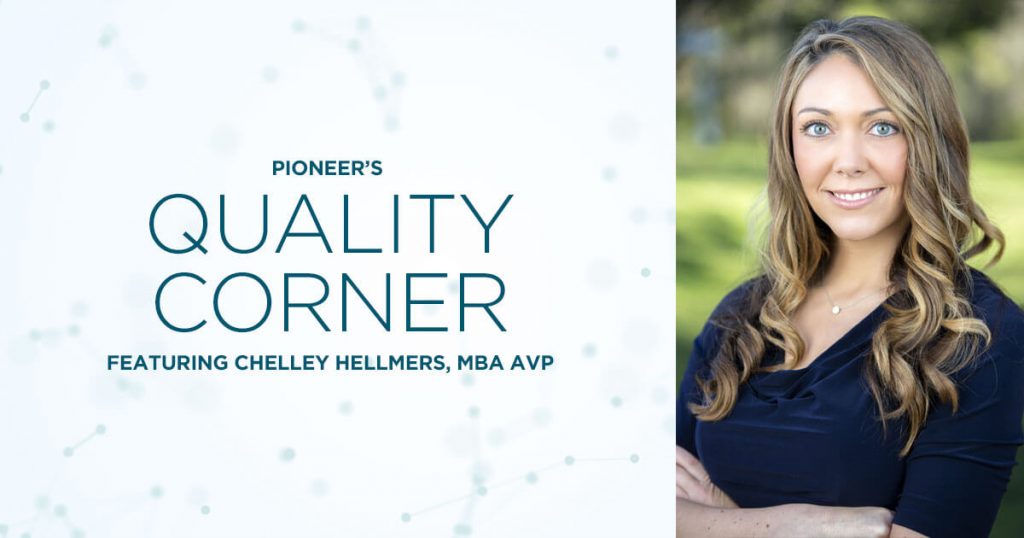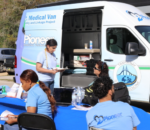Pioneer clinicians have always aspired to take excellent care of our patients. The quality of that care is measured through a variety of sources including the patients’ experience. The Hospital Consumer Assessment of Healthcare Providers and Systems (HCAHPS) survey is the first and only nationally standardized and publicly reported tool. It is designed to produce data about patients’ perspectives of care in a way that allows consumers to make meaningful comparisons of hospitals and care teams. A random sample of patients receive a survey by mail between 48 hours and 6 weeks after leaving the hospital. Patients have 35 days to complete and return the survey.
There are 21 core questions that cover the following composites:
- Communication with Doctors
- Communication with Nurses
- Responsiveness of Hospital Staff
- Pain Control
- Communication about New Medications
- Discharge Information & Planning
- Cleanliness & Quietness
Physicians are measured within the Doctor Communication composite which consists of three questions related to the patient’s hospital stay. The patient is asked the following questions:
- How often their doctors treated them with courtesy and respect,
- How frequently their doctors listened to them carefully, and
- How often their doctors explained things in a way they could understand.
Possible answers are “Always,” “Usually,” “Sometimes,” or “Never.” Credit is only given for the top answer. “Always.” Attribution is based on who is listed as the attending physician in the Electronic Medical Record (EMR) at the time of discharge. Hospital reimbursement and ratings are dependent on HCAHPS results. The more satisfied patients are with the care they receive, the more likely they will continue to seek care from the same clinic, provider, and hospital. This likelihood improves the patient’s continuity of care. High-quality physician-patient communication has been linked to improved outcomes.
Pioneer’s goal for Doctor Communication is that at least 84.7% of patients respond to Doctor Communication questions with “Always,” which is the 75th percentile rank nationally. There are many factors that impact our HCAHPS score, including the number of surveys returned and the communication style of our clinical care team members. Because we believe every clinician has their own unique communication style and approach, Pioneer partnered with CTI to create a Coach-Assisted Improvement program through Pioneer’s Academy of Knowledge. CTI is the leading healthcare training, coaching and consulting firm, empowering physicians and leaders with leadership, strategy and innovation skills to deliver exceptional outcomes in an ever-changing healthcare environment. During the month of April, the Wesley Chapel and Zephyrhills medical staff completed a series of personality and communication assessments prior to spending 1:1 time with Mo Kasti, Founder & CEO of CTI, Executive Healthcare Coach and Dan Eisenman, Dan Eisenman – Executive Healthcare Coach. High-quality interactions between physicians and patients lead to the patient feeling valued. It is important for patients to feel their opinions are taken into consideration and have a clear explanation of their care plan. Improving the human aspect of our care and enhancing the quality of our communication, by remembering to practice empathy in the midst of demanding schedules and stressful workdays, are what move an answer from “Usually” to “Always.”
Here are some best practices we were reminded of:
- Look for cues when you enter the room to connect with the patient and their family.
- Use your business card as a tool to introduce yourself at the beginning of the stay.
- Be present with your patient while communicating.
- Sit down at the bedside and make sure technology (WOW) is not a physical barrier between you and the patient.
- Involve the bedside nurse, refer to them by name, and work with them to help connect the dots.
- Clearly outline the plan for the day and explain how it fits into the overall goal of their hospitalization.
- Ask open-ended questions using the teach-back method.
- Incorporate the patient and their loved ones in the decision-making process by giving them options and choices.
- Avoid medical jargon, explain things in layman’s terms, and invite patients to ask questions.
- Use whiteboards to make a personal connection beyond the clinical experience.
- Encourage survey participation.









